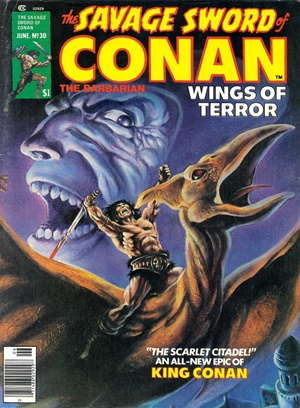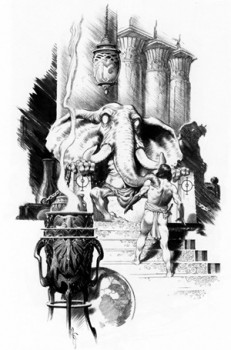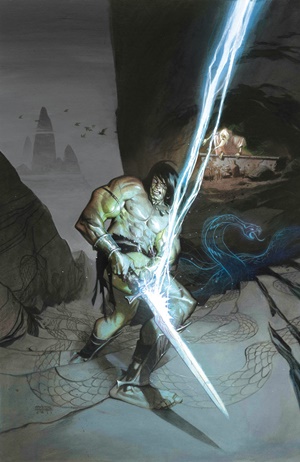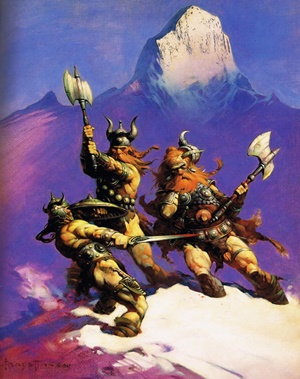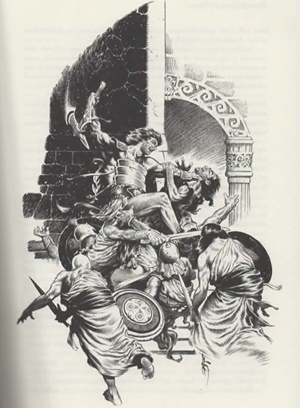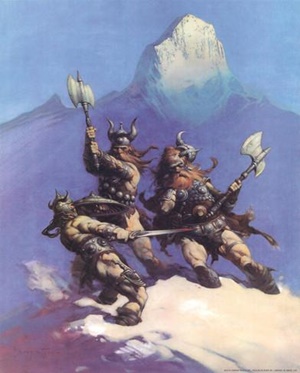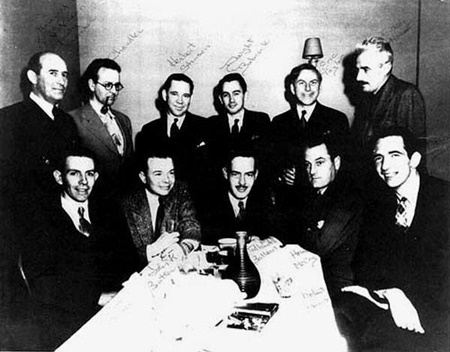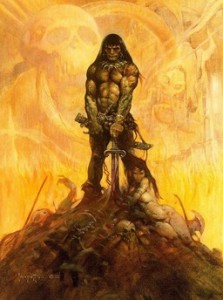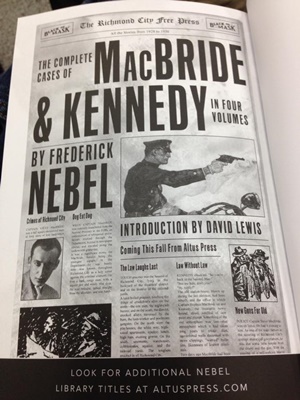Hither Came Conan: Morgan Holmes on “Iron Shadows in the Moon”

“Shadows in the Moonlight” (editor’s note: Howard’s original title was “Iron Shadows in the Moon”) was the eighth Conan story to appear in the pulp magazine Weird Tales. Conan had turned out to be a popular character with Weird Tales readers. The character was so popular in fact that fellow Weird Tales writer, E. Hoffmann Price, later wrote that Conan had saved the magazine more than once.
“Shadows in the Moonlight” appeared in the April 1934 issue of Weird Tales. This was an especially strong issue of the magazine. The contents included:
“Satan’s Garden” (Part 1 of 2) E. Hoffmann Price (cover story)
“Black Thirst” C. L. Moore
“Corsairs of the Cosmos” Edmond Hamilton
“Shadows in the Moonlight” Robert E. Howard
“The Death of Malygris” Clark Ashton Smith
“Behind the Screen” Dale Clark
“The Cane” Carl Jacobi
“Bells of Oceana” Arthur J. Burks
“In Mayan Splendor” (poem) Frank Belknap Long
The 1930s Golden Age of Weird Tales was in full force with the three main first stringers present: Robert E. Howard, Clark Ashton Smith, and C. L. Moore. Carl Jacobi, while not a headliner author, always produced good-to-excellent horror stories. The Arthur J. Burks story is a reprint from 1927. Burks was the sort of middling writer along the lines of Otis Adelbert Kline and Seabury Quinn that editor Farnsworth Wright was comfortable publishing. The only real weak story was by Dale Clark. Farnsworth Wright has a penchant for barely competent and unmemorable stories of this sort.
